How to Choose the Best Quilting Scissors
Choosing the right quilting scissors can feel like searching for a needle in a haystack, especially with so many options available. But fear not! This guide is designed to help you navigate through the myriad of choices and find the perfect pair that suits your quilting needs. Whether you're a seasoned quilter or just starting out, the right scissors can make a world of difference in your crafting experience. Imagine slicing through fabric like a hot knife through butter; that’s the kind of precision and ease the right scissors can provide. So, let’s dive into the essential features, types, and tips that will elevate your quilting game.
Different types of quilting scissors serve various purposes, and knowing which tool to use can make your projects more enjoyable and efficient. For instance, fabric scissors are designed specifically for cutting fabric, ensuring clean edges without fraying. On the other hand, thread snips are perfect for those quick snips you need while working on intricate designs. Rotary cutters, which are circular blades, are fantastic for making long, straight cuts on multiple layers of fabric. Understanding these tools will help you select the best ones for your quilting projects.
When selecting quilting scissors, several features are crucial for ensuring you have the best tools for your craft. One of the most significant aspects is the blade material. You want something durable and efficient, which leads us to the next point: the handle design. An ergonomic handle can make a huge difference, especially during long quilting sessions. Lastly, the size of the scissors matters too; it can impact your comfort and cutting accuracy. Let’s break these down further.
The material of the blades significantly influences performance. Here’s a quick overview of the most common types:
| Blade Material | Pros | Cons |
|---|---|---|
| Stainless Steel | Rust-resistant, durable | Can be less sharp than others |
| Carbon Steel | Extremely sharp, retains edge well | Prone to rust if not maintained |
| Titanium | Lightweight, corrosion-resistant | Can be more expensive |
Understanding these differences will help you make informed decisions based on durability and cutting efficiency.
A comfortable handle design enhances usability, especially during those marathon quilting sessions. Look for ergonomic designs that fit snugly in your hand, reducing fatigue. The materials used for grips also matter; rubberized or cushioned handles can provide extra comfort. Remember, a good pair of scissors should feel like an extension of your hand, allowing you to focus on your creativity rather than discomfort.
The size of quilting scissors can impact your cutting accuracy and comfort. Larger scissors might be great for cutting through multiple layers of fabric, while smaller ones excel at intricate cuts. It’s essential to choose scissors that fit your hand dimensions and the types of fabrics you frequently work with. A good rule of thumb is to try out different sizes to see which feels most comfortable during use.
Understanding the advantages of small versus large scissors is essential. Small scissors are perfect for detail work, allowing you to navigate curves and corners with precision. In contrast, larger scissors can handle broad cuts and multiple layers, making them indispensable for big projects. Depending on your quilting style, you might find that having a pair of both sizes is incredibly beneficial.
For quilters on the go, portable scissors are essential. Compact and lightweight scissors can easily fit into your sewing kit, allowing you to quilt anywhere without sacrificing cutting quality. Look for options that come with protective covers to keep the blades safe during transport. Whether you’re heading to a quilting class or a friend’s house, having the right portable scissors can make your quilting experience seamless.
Proper maintenance of your quilting scissors extends their lifespan and maintains performance. Regularly clean the blades to remove any fabric residue, and consider sharpening them every few months to keep them cutting like new. Storing your scissors in a protective case can prevent accidental damage and ensure they remain in optimal condition for all your quilting projects.
Finding the right quilting scissors within your budget is crucial. While it’s tempting to go for the cheapest option, investing in quality tools can save you money in the long run. Scissors come in various price ranges, so it’s essential to balance quality and affordability. Remember, a reliable pair of scissors can be a quilter's best friend, making your crafting experience more enjoyable and efficient.
Expert opinions can guide your choice of quilting scissors. Seasoned quilters often recommend brands known for their durability and performance. Some favorites include:
- Fiskars - Known for their ergonomic designs and sharp blades.
- Gingher - A classic choice for professional quilters.
- Olfa - Renowned for their rotary cutters and cutting mats.
These brands have stood the test of time and come highly recommended by those who know quilting inside and out.
Q: How often should I sharpen my quilting scissors?
A: It depends on usage, but generally, every few months should keep them in good shape.
Q: Can I use regular scissors for quilting?
A: While you can, it's not recommended as they may not provide the precision needed for fabric cutting.
Q: What size scissors should I start with?
A: A medium-sized pair is usually a good starting point, but consider your specific needs as you progress.
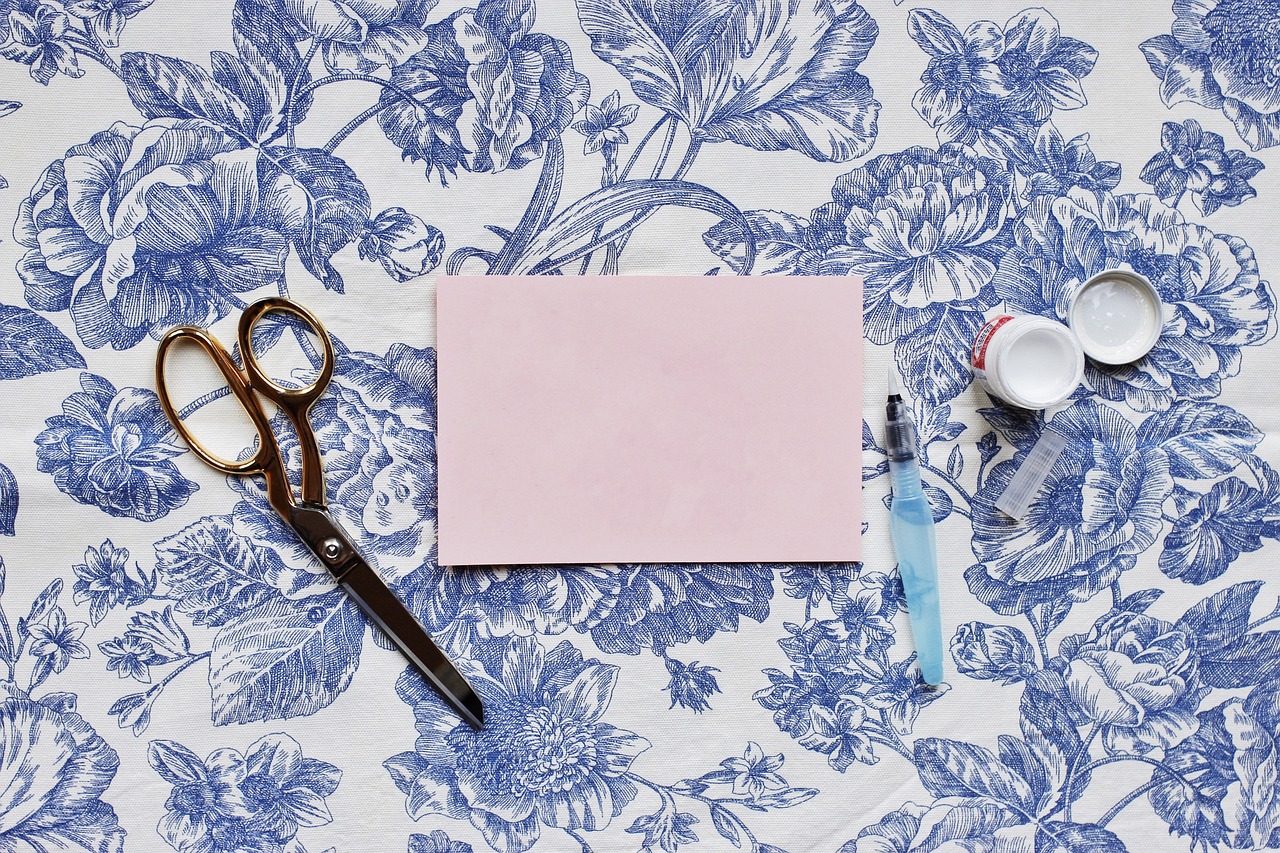
Understanding Scissor Types
When it comes to quilting, the right tools can make all the difference in your crafting experience. Just like a painter needs the right brushes, a quilter needs the right scissors. There are several types of scissors that cater to different needs and tasks within the quilting process. Understanding these types will help you choose the best tools for your projects, ensuring precision and ease in your work.
First up, we have fabric scissors. These are typically larger, designed specifically for cutting fabric. Their blades are sharp and long, allowing for smooth, straight cuts through multiple layers of fabric. The key here is that they are not meant for cutting anything else, as doing so can dull the blades quickly. Think of fabric scissors as your trusty steed, always ready to gallop through yards of fabric without a hitch.
Next on the list are thread snips. These little guys are perfect for quick snips and trimming threads. Often resembling a pair of tweezers, they are lightweight and easy to maneuver, making them ideal for those pesky threads that seem to pop up everywhere. Imagine them as your trusty sidekick, always there to assist you in those final touches of your quilting masterpiece.
Another essential tool is the rotary cutter. While technically not scissors, they are a game-changer in the quilting world. With a circular blade, rotary cutters allow you to cut through multiple layers of fabric with precision and speed. They are particularly useful for straight cuts and can be used alongside a cutting mat for the best results. Think of a rotary cutter as your high-speed train, zipping through fabric layers effortlessly.
To give you a clearer picture, here’s a quick comparison of these common scissor types:
| Type | Best For | Features |
|---|---|---|
| Fabric Scissors | Cutting fabric | Long blades, sharp edges |
| Thread Snips | Trimming threads | Small, lightweight, easy to use |
| Rotary Cutter | Cutting multiple layers | Circular blade, fast cutting |
Each type of scissor has its own unique purpose, and using the right one can enhance your quilting experience significantly. For instance, if you're working on intricate designs, fabric scissors will give you the precision you need, while thread snips will help you clean up your work without hassle. On the other hand, if you're cutting large pieces of fabric, a rotary cutter will save you time and energy.
In summary, understanding the different types of quilting scissors is essential for any quilter. By choosing the right tools, you can ensure that your quilting projects go smoothly and look fantastic. So, the next time you’re in the market for scissors, remember to consider what you’ll be cutting and how each type can help you achieve your quilting goals.

Key Features to Consider
When it comes to selecting the perfect quilting scissors, there are several key features that you simply cannot overlook. Choosing the right pair is essential for ensuring that your quilting projects come out with precision and ease. Let’s dive into some of the most important aspects to consider, so you can make an informed decision that suits your quilting needs.
First and foremost, the blade material plays a critical role in the performance of your scissors. Different materials offer various benefits and drawbacks. For instance, stainless steel blades are known for their durability and resistance to rust. On the other hand, carbon steel blades tend to be sharper and can hold an edge longer, but they may require more maintenance to prevent corrosion. Lastly, titanium-coated blades provide a wonderful balance of strength and sharpness, making them a popular choice among quilters. It’s essential to weigh these options based on how often you quilt and the types of fabrics you typically use.
Next, let’s talk about handle design. The comfort of your scissors is paramount, especially if you spend hours cutting fabric. Ergonomic handles that fit comfortably in your hand can significantly reduce fatigue. Look for scissors with soft grip materials that provide a secure hold. This is particularly important for those intricate cuts that require precision. A well-designed handle not only enhances usability but can also make your quilting experience much more enjoyable.
Size matters too! When choosing quilting scissors, consider the size that feels best for you. Smaller scissors offer more control for detailed work, while larger scissors can make quick work of cutting through multiple layers of fabric. Think about your hand dimensions and how they relate to the size of the scissors you’re considering. A pair that feels just right can make all the difference in your cutting accuracy and overall comfort.
In addition to size, you might want to consider portable options if you’re a quilter on the go. Compact and lightweight scissors are perfect for taking to classes or sewing meet-ups. Look for models that maintain cutting quality while being easy to carry. After all, the last thing you want is to compromise on quality just because you're away from your home sewing station.
Lastly, don’t forget about the maintenance of your scissors. Proper care can extend their lifespan and keep them performing at their best. Regularly cleaning your scissors and having them sharpened when necessary can prevent dull blades and ensure precise cuts every time. Store them properly to avoid damage and keep them in optimal condition for your quilting adventures.
In summary, when choosing quilting scissors, pay close attention to blade material, handle design, size, portability, and maintenance. These features will not only enhance your cutting experience but also ensure that your quilting projects turn out beautifully.
- What type of scissors is best for quilting? It depends on your specific needs, but generally, fabric scissors and thread snips are essential for most quilting tasks.
- How often should I sharpen my quilting scissors? It’s recommended to sharpen them whenever you notice a decline in cutting performance, which could be every few months or more frequently with heavy use.
- Can I use regular scissors for quilting? While you can use regular scissors, investing in quilting scissors will provide better precision and comfort.

Blade Material
When it comes to quilting scissors, the is one of the most critical factors that can influence your cutting experience. Choosing the right material can mean the difference between a smooth, effortless cut and a frustrating, jagged edge. The three most common types of blade materials you'll encounter are stainless steel, carbon steel, and titanium. Each of these materials has its own unique properties, advantages, and disadvantages that can affect your quilting projects.
Stainless Steel blades are popular for their resistance to rust and corrosion, making them an excellent choice for quilters who may occasionally work with damp fabrics. They are durable and maintain their sharpness well, although they may not hold an edge as long as carbon steel. If you’re looking for low maintenance and reliability, stainless steel is a solid option.
Carbon Steel scissors, on the other hand, are known for their exceptional sharpness and ability to hold an edge longer than stainless steel. However, they are more susceptible to rust, so they require a bit more care. If you're the type of quilter who values precision and sharpness over everything else, carbon steel might just be your best friend. Just remember to keep them dry and oiled!
Then we have titanium blades, which are a newer contender in the market. These blades are often coated with titanium, providing a combination of strength and resistance to corrosion. They are lightweight and incredibly durable, making them ideal for quilters who need scissors that can withstand frequent use without dulling quickly. Plus, they often come with a non-stick coating, which is perfect for cutting through fabrics with adhesive or fusible backing.
To help you visualize the differences, here's a quick comparison table:
| Blade Material | Sharpness | Durability | Maintenance |
|---|---|---|---|
| Stainless Steel | Moderate | High | Low |
| Carbon Steel | High | Moderate | Medium |
| Titanium | High | Very High | Low |
In conclusion, when selecting quilting scissors, the blade material is an essential consideration that can significantly affect your quilting experience. Whether you prioritize sharpness, durability, or maintenance, understanding the differences between these materials will help you make an informed choice that suits your quilting needs!
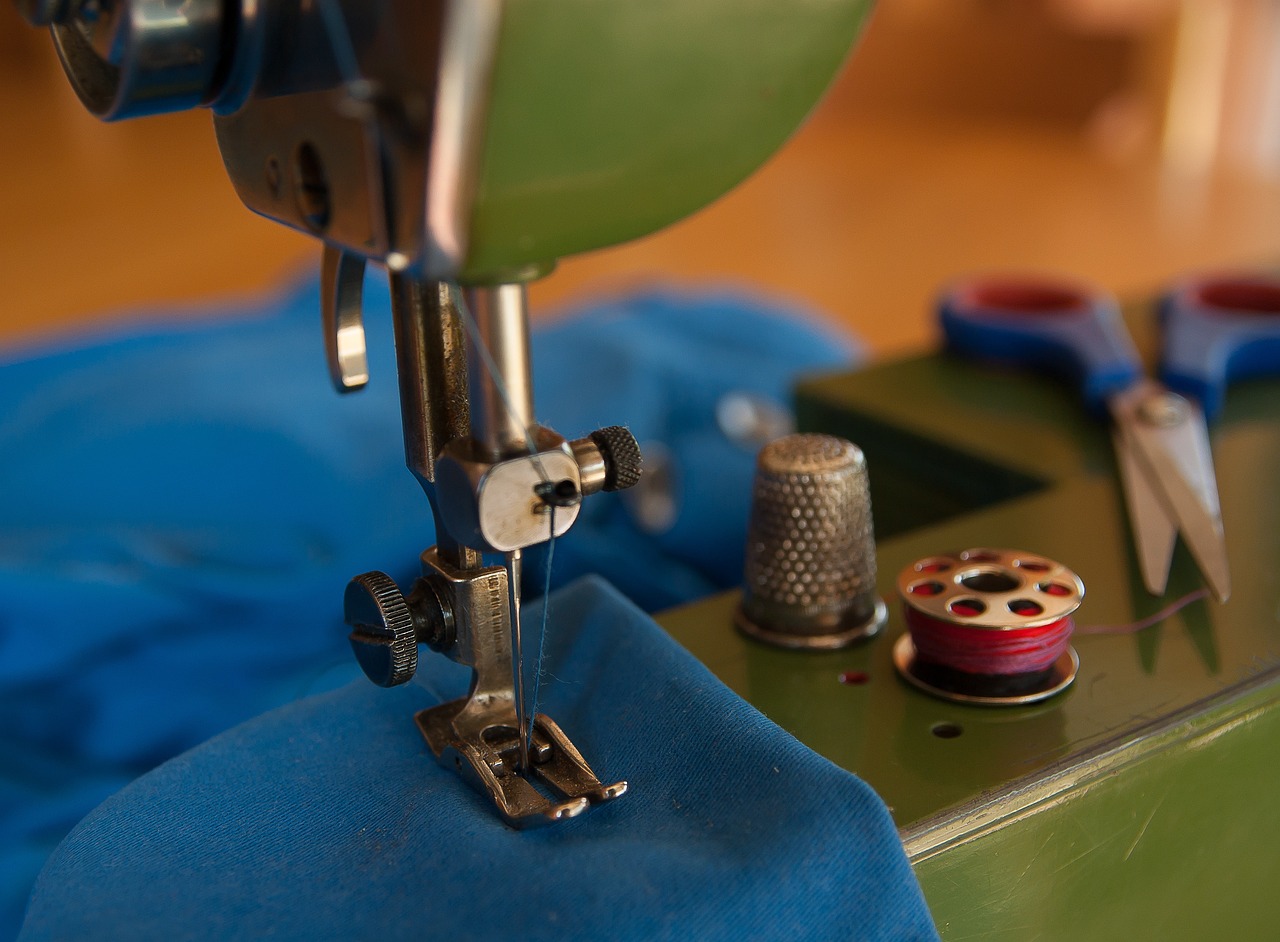
Handle Design
When it comes to quilting scissors, the is more than just a detail; it's a game changer. Imagine spending hours cutting fabric for your latest quilt, only to find that your hands are aching and fatigued. That's where a well-designed handle comes in. A comfortable handle can mean the difference between an enjoyable sewing session and a frustrating experience. So, what should you look for in a handle design?
First and foremost, consider the ergonomics of the handle. Ergonomic designs are crafted to fit the natural shape of your hand, allowing for a more comfortable grip. This is particularly important if you plan to use your scissors for extended periods. Look for handles that have a curved shape or those that fit snugly in your palm, reducing strain on your fingers and wrists.
Next, the materials used in the handle can greatly affect your comfort level. Handles made from soft rubber or foam provide a cushioned grip, which can help absorb pressure and prevent slipping. On the other hand, plastic handles can be lightweight but may lack the comfort needed for long quilting sessions. If possible, try out different scissors to see which handle feels best in your hand.
Another essential aspect is the size of the handle. Handles that are too small can lead to discomfort, while those that are excessively large may be challenging to control. It's crucial to choose scissors with handles that match your hand size. If you're someone who often shares tools with others, consider scissors that accommodate a range of hand sizes.
Lastly, don’t overlook the design features that can enhance usability. Some scissors come with finger rests or adjustable handles, allowing you to customize the fit and feel. These features can make a significant difference, especially when you're cutting through thick layers of fabric or intricate patterns. Investing in scissors with thoughtful handle designs can elevate your quilting experience and ensure that you can work on your projects without discomfort.
| Handle Feature | Benefits |
|---|---|
| Ergonomic Design | Reduces hand fatigue and improves comfort during extended use. |
| Soft Grip Materials | Provides cushioning and prevents slipping, enhancing control. |
| Adjustable Handles | Allows customization for different hand sizes, improving usability. |
In conclusion, the handle design of your quilting scissors is a crucial factor that should not be overlooked. A well-designed handle can enhance your cutting experience, making it more enjoyable and efficient. So, the next time you’re in the market for new scissors, remember to prioritize comfort and usability in your selection process!
- What is the best material for quilting scissor handles?
Soft rubber or foam materials are often preferred for comfort and grip.
- How do I know if the handle size is right for me?
Try holding the scissors; they should feel comfortable and allow for easy control without straining your fingers.
- Are ergonomic handles worth the investment?
Absolutely! They can reduce hand fatigue and make long quilting sessions much more enjoyable.
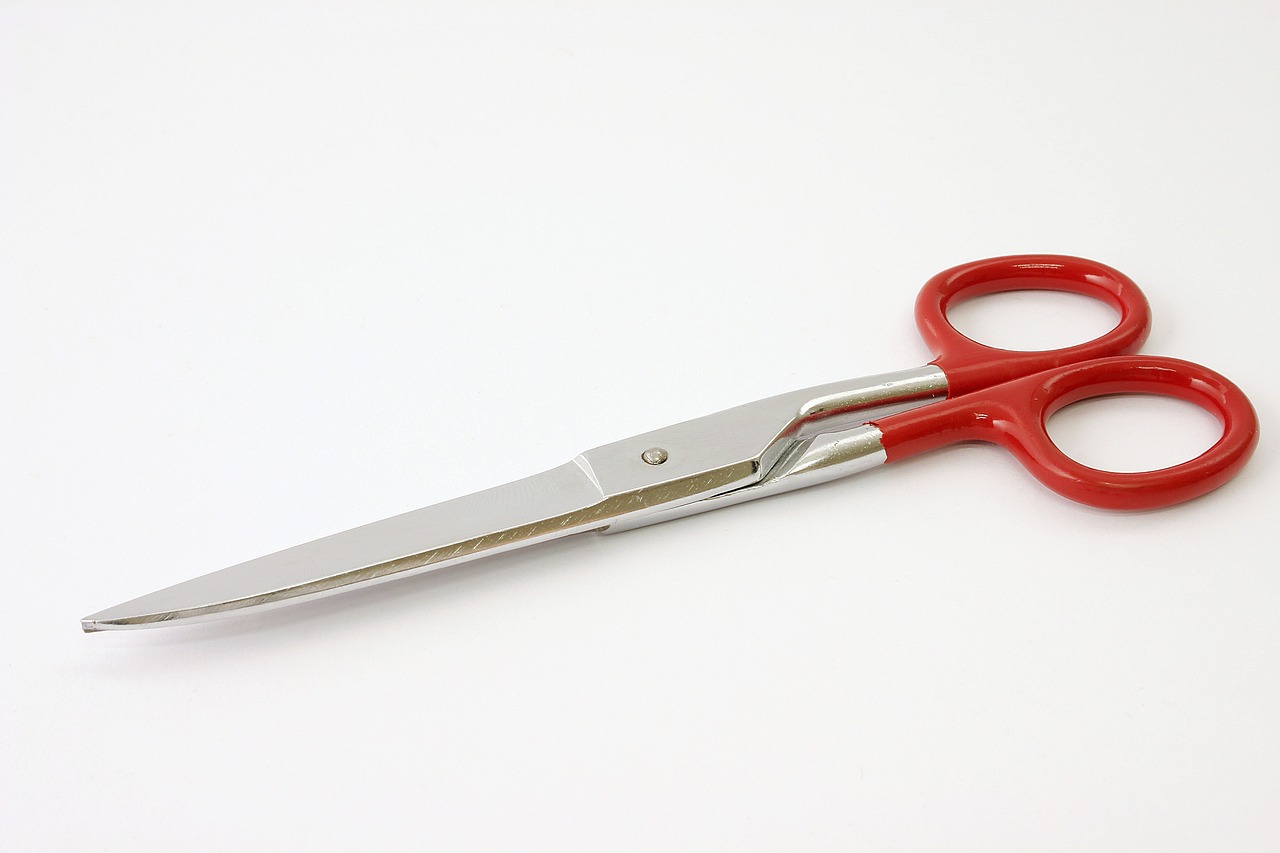
Choosing the Right Size
When it comes to quilting scissors, size truly matters! Just imagine trying to cut through a thick layer of fabric with a pair of tiny scissors—frustrating, right? The right size of scissors can significantly impact not only your cutting accuracy but also your overall comfort while working on your quilting projects. So, how do you choose the perfect size for your needs? Let's dive into some key considerations!
First off, think about your hand dimensions. If you have larger hands, you might find smaller scissors uncomfortable to use for extended periods. On the flip side, if you have petite hands, oversized scissors may feel unwieldy and difficult to maneuver. The ideal pair of scissors should feel like an extension of your hand, allowing for smooth and effortless cutting.
Next, consider the types of fabrics you frequently work with. For instance, if you're often cutting through thick materials like batting or multiple layers of fabric, larger scissors with longer blades can provide the leverage you need. However, if your projects involve intricate designs or delicate fabrics, smaller scissors with precision tips will allow for detailed work without risking snags or uneven cuts.
It's also essential to think about the tasks you'll be performing most often. For example, if you're primarily doing straight cuts, a larger pair might be your go-to. However, for tasks that require more finesse, like trimming seams or cutting curves, a smaller, more maneuverable pair will be indispensable. Remember, having a couple of different sizes in your toolkit can be a game-changer, allowing you to tackle a variety of quilting tasks with ease.
In summary, choosing the right size of quilting scissors is about finding the perfect balance between comfort and functionality. By considering your hand size, the types of fabrics you work with, and the tasks you'll be performing, you can select scissors that enhance your quilting experience. Just like a chef needs the right knife for different ingredients, a quilter needs the right scissors for various fabrics and cuts!
Now that we've covered the importance of size, let’s move on to some practical tips for maintaining your scissors, ensuring they stay sharp and ready for action!
- What size quilting scissors should I choose for intricate designs?
Opt for smaller scissors with precision tips, as they allow for better control and accuracy. - Can I use the same scissors for all types of fabrics?
While it's possible, having different sizes for various fabric types will yield better results. - How do I know if my scissors are the right size for my hands?
They should feel comfortable and balanced in your hand, allowing for easy maneuverability.

Small vs. Large Scissors
When it comes to quilting scissors, size truly matters! The choice between small and large scissors can significantly impact your cutting experience and the quality of your work. Small scissors are typically lighter and easier to maneuver, making them perfect for intricate cuts and detailed work. Imagine trying to cut around the curves of a delicate fabric; small scissors can glide precisely where you need them, allowing for a level of control that larger scissors simply can't match. They're like the nimble fingers of a skilled artisan, effortlessly dancing around tight corners.
On the other hand, large scissors bring their own set of advantages. They are excellent for cutting through larger pieces of fabric and can tackle multiple layers at once, saving you time and effort. If you’ve ever tried to cut through a thick quilt sandwich with small scissors, you know how frustrating it can be! Large scissors can feel like wielding a powerful tool, allowing you to make swift, confident cuts that can transform your quilting process.
However, it's essential to consider how you plan to use your scissors. If your quilting projects often involve intricate designs or small pieces, small scissors might be your best bet. Think of them as your trusty sidekick, always ready to assist with precision. Conversely, if you’re working with larger quilts or bulk fabric, investing in a good pair of large scissors could be a game-changer. They can be your reliable partner, helping you cut through the fabric like a hot knife through butter.
Ultimately, the best choice depends on your personal quilting style and the specific tasks at hand. Some quilters even opt for both sizes, using small scissors for detailed work and large ones for broader cuts. This combination allows for versatility, ensuring that you have the right tool at your disposal for any quilting challenge. Just remember, whether small or large, the right scissors can make all the difference in your quilting journey!
- What is the best size for quilting scissors? The best size depends on your quilting style. Small scissors are great for detailed cuts, while large scissors excel at cutting through multiple layers.
- Can I use regular scissors for quilting? While you can use regular scissors, quilting scissors are designed specifically for fabric, providing better precision and comfort.
- How often should I sharpen my quilting scissors? It's recommended to sharpen your scissors every few months, or whenever you notice a decrease in cutting performance.
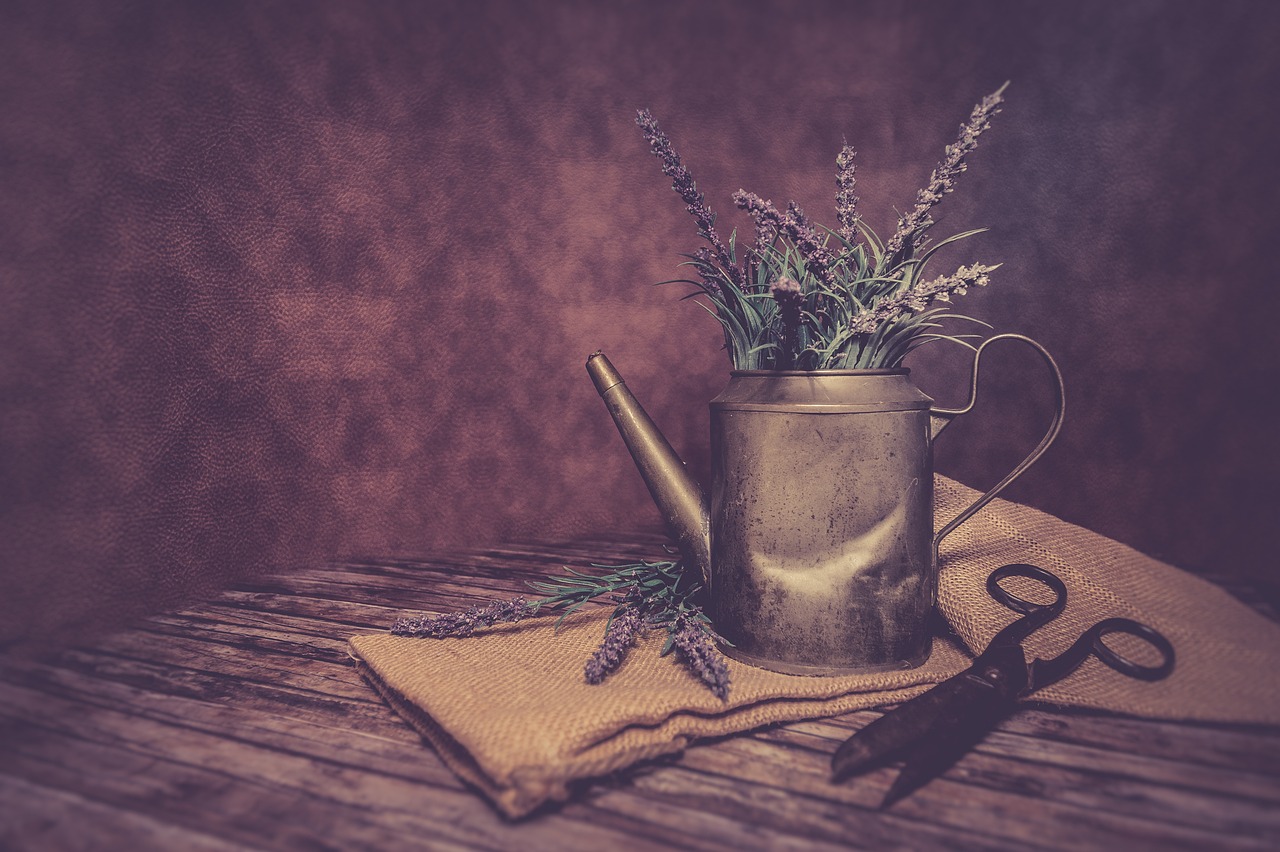
Portable Options
When it comes to quilting, having the right tools at your fingertips is essential, especially if you’re someone who likes to quilt on the go. Portable quilting scissors are a game changer for quilters who want to maintain precision and quality without being anchored to a workspace. Imagine being able to whip out your scissors at a coffee shop, in a park, or even at a quilting retreat! The convenience of portable options allows you to seize inspiration wherever it strikes.
So, what should you look for in portable quilting scissors? First and foremost, size and weight are crucial. You want something that fits comfortably in your hand and isn’t too bulky to carry around. Many quilters prefer compact scissors that can easily slip into a sewing bag or even a pocket. Look for scissors that are lightweight yet sturdy enough to handle multiple fabric layers without losing their edge.
Another important feature is the blades. While you might think that all scissors are created equal, the blade quality can dramatically affect your cutting experience. Portable scissors often come with sharp, stainless steel blades that provide clean cuts, which is vital for maintaining the integrity of your fabric. Some models even have a spring-action mechanism that makes cutting effortless, reducing hand fatigue during prolonged use.
Here are a few popular portable options that many quilters rave about:
- Thread Snips: These are small, lightweight, and perfect for quick snips. They often come with a protective cover, making them safe to toss into your bag.
- Folding Scissors: These innovative tools fold in half, making them incredibly compact. They’re a great choice for quilters who need something that can fit into the tightest spaces.
- Rotary Cutters with Storage: Some rotary cutters come with a built-in storage compartment for extra blades, making them perfect for quilters who want versatility and convenience.
Ultimately, the right portable scissors will depend on your individual quilting style and preferences. Whether you’re working with intricate patterns or larger fabric pieces, having the right tools at your disposal can make all the difference. So, the next time you’re preparing for a quilting session away from home, consider investing in a quality pair of portable scissors that will keep your creativity flowing no matter where you are!
Q: What are the best portable scissors for quilting?
A: The best portable scissors for quilting depend on your specific needs, but many quilters recommend thread snips for quick cuts and folding scissors for compact storage.
Q: Can I use regular scissors for quilting?
A: While you can use regular scissors, investing in specialized quilting scissors will provide better precision and comfort, especially for intricate cuts.
Q: How do I maintain my portable quilting scissors?
A: Regularly clean the blades, store them in a protective case, and sharpen them when necessary to ensure longevity and optimal performance.

Maintenance Tips
Taking care of your quilting scissors is not just about keeping them sharp; it's about ensuring they perform at their best for years to come. Just like a well-tuned instrument enhances a musician’s performance, properly maintained scissors enhance your quilting experience. So, let’s dive into some essential maintenance tips that will keep your scissors in top shape!
First and foremost, cleaning your scissors regularly is crucial. Fabric fibers, threads, and even adhesive residues can accumulate over time, hindering their cutting efficiency. To clean your scissors, simply use a soft cloth or a small brush to remove any debris. For tougher residues, a little rubbing alcohol on a cloth can work wonders. Just remember to avoid using abrasive materials that could scratch the blades.
Next up is sharpening. Dull scissors can be a quilter's worst nightmare, leading to jagged cuts and frayed edges. You might be wondering how often you should sharpen them. A general rule of thumb is to sharpen your scissors after every 20 hours of use. You can either use a sharpening stone or take them to a professional sharpener. If you prefer the DIY route, be sure to follow the manufacturer’s instructions to maintain the correct angle of the blades.
Storage is another critical aspect of maintenance. Storing your scissors improperly can lead to dull blades or even accidents. Always keep your scissors in a protective case or a dedicated scissor holder to avoid accidental damage. If you have multiple pairs, consider organizing them in a drawer with dividers to prevent them from clashing with other tools. A well-organized workspace not only looks good but also enhances your efficiency!
Lastly, consider the environment where you store your scissors. Humidity can cause rust, while extreme temperatures can affect the integrity of the blades. Keep your scissors in a dry, temperature-controlled environment, and you’ll be amazed at how much longer they last!
In summary, proper maintenance of your quilting scissors involves a combination of cleaning, sharpening, and careful storage. By following these tips, you’ll ensure that your scissors remain sharp and efficient, allowing you to focus on creating beautiful quilts without any cutting frustrations.
As with any craft, questions often arise. Here are some frequently asked questions regarding the maintenance of quilting scissors:
- How often should I clean my scissors? Ideally, you should clean your scissors after every sewing session to prevent buildup.
- Can I use regular kitchen sharpeners for my quilting scissors? It's best to use sharpeners specifically designed for fabric scissors to maintain the proper angle and avoid damage.
- What should I do if my scissors get rusty? You can gently rub the rust with fine steel wool or a rust eraser, but be cautious not to scratch the blades.
- Is it necessary to have multiple pairs of scissors? Yes, having different sizes and types can enhance your quilting versatility and efficiency.
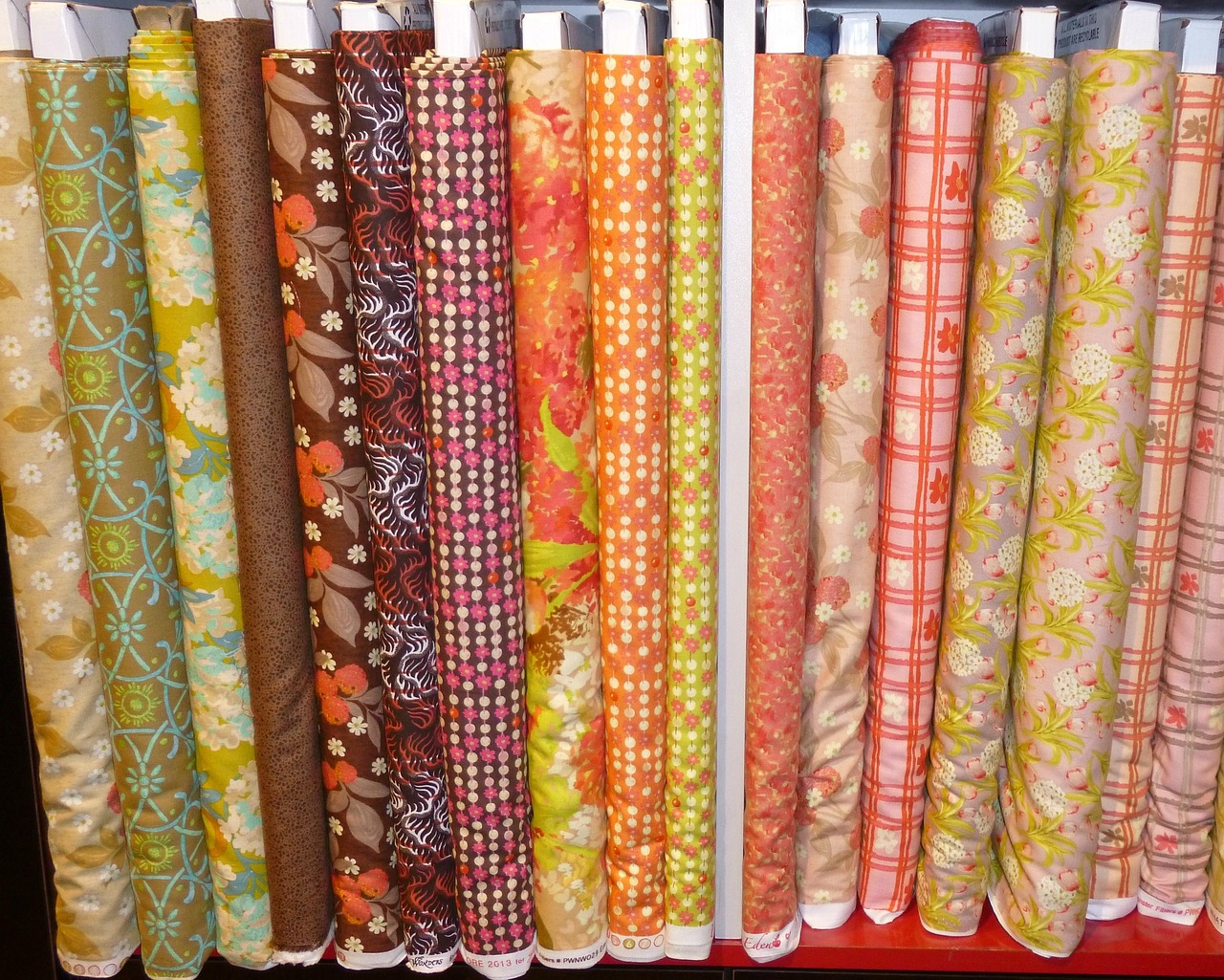
Budget Considerations
When it comes to choosing the best quilting scissors, play a significant role in your decision-making process. After all, quilting is a craft that can quickly become an expensive hobby, and you want to ensure that you are investing wisely in tools that will serve you well for years to come. The market offers a wide range of scissors at various price points, and understanding what you can expect at each level is crucial for making an informed choice.
Firstly, it’s essential to recognize that quality doesn’t always come with a hefty price tag. While it’s tempting to think that the most expensive scissors are the best, many mid-range options provide excellent performance without breaking the bank. For instance, you might find a pair of fabric scissors that cost around $20 to $50, which can serve you well for most quilting tasks. These scissors often feature durable stainless steel blades and comfortable handles, making them a reliable choice for both beginners and experienced quilters alike.
On the other hand, if you are serious about your quilting and plan to use your scissors frequently, it might be worth investing in higher-end models that range from $50 to $100 or more. These premium scissors often come with advanced features like ergonomic designs, superior blade materials, and precision cutting capabilities. For example, titanium-coated blades can enhance cutting efficiency and maintain sharpness longer than standard stainless steel blades, offering a better long-term value.
Another factor to consider is the type of scissors you need. If you are looking for specialized tools like rotary cutters or thread snips, the prices can vary significantly. Rotary cutters, for instance, can range from $15 to over $50, depending on the brand and features. Investing in a good rotary cutter can save you time and effort, making it a worthwhile addition to your quilting toolkit.
It’s also wise to keep an eye out for sales and discounts. Many craft stores and online retailers offer seasonal sales, where you can snag high-quality quilting scissors at reduced prices. Signing up for newsletters or following your favorite brands on social media can help you stay informed about these deals. Additionally, consider checking out local quilting groups or forums, as members often share tips on where to find the best prices.
To summarize, here are some key points to keep in mind when considering your budget for quilting scissors:
- Quality scissors can be found at various price points, from budget-friendly options to premium models.
- Investing in higher-end scissors may provide long-term benefits if you quilt frequently.
- Look for sales and discounts to maximize your budget.
- Consider the specific types of scissors you need for your quilting projects.
Ultimately, the best approach is to determine a budget that aligns with your quilting goals and stick to it. Remember, your scissors are an investment in your craft, and choosing the right pair can enhance your quilting experience significantly. Whether you opt for a budget-friendly option or splurge on premium scissors, the key is to find a tool that feels right in your hands and meets your specific needs.
Q: How much should I spend on quilting scissors?
A: It depends on your quilting needs. You can find good quality scissors for as low as $20, but if you quilt often, consider investing in a pair that costs between $50 and $100 for better durability and performance.
Q: Are expensive scissors worth it?
A: Often, yes! Higher-end scissors typically offer better materials, ergonomic designs, and longer-lasting sharpness, making them worth the investment for serious quilters.
Q: What type of scissors do I need for quilting?
A: It’s advisable to have a variety, including fabric scissors, thread snips, and possibly a rotary cutter for more intricate cuts. Each type serves a different purpose, enhancing your quilting efficiency.
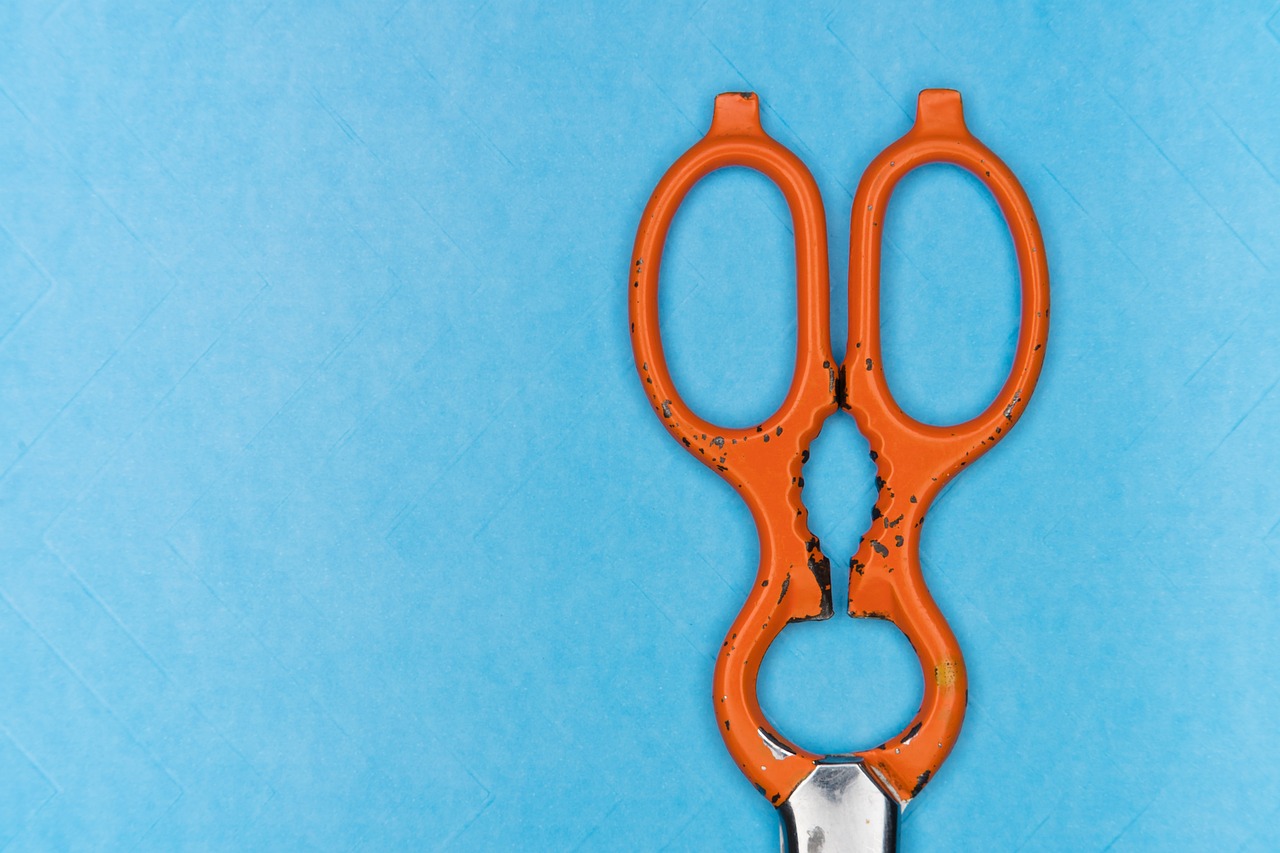
Recommendations from Experts
When it comes to choosing the best quilting scissors, expert recommendations can be invaluable. Many seasoned quilters have spent years honing their craft and have developed a keen sense of what tools work best for their specific needs. One of the most frequently mentioned brands among quilting professionals is Fiskars. Known for their ergonomic designs and durable blades, Fiskars scissors are a favorite for their ability to cut through multiple layers of fabric with ease. Experts often highlight the Fiskars 8-inch Softgrip Scissors as a must-have for any quilter.
Another brand that garners high praise is Gingher. Their scissors are often described as the 'luxury' option in the quilting world, offering exceptional sharpness and precision. The Gingher 8-inch Knife Edge Dressmaker's Shears are particularly recommended for those who value a clean cut and are willing to invest a bit more for quality.
For those who prefer a more compact option, experts recommend Olfa rotary cutters. The Olfa 45mm Rotary Cutter is a favorite among quilters who appreciate the speed and efficiency of rotary cutting, especially when working with intricate designs. Rotary cutters can be a game-changer, allowing quilters to make precise cuts quickly, which is essential when working on larger projects.
In addition to these brands, many experts suggest visiting local quilting shops or online quilting forums to get firsthand opinions from fellow quilters. Engaging with the quilting community can provide insights into the latest tools and techniques that may not yet be widely known. Remember, the best scissors for you depend on your personal quilting style and preferences.
To summarize, here are some expert-endorsed options to consider:
- Fiskars 8-inch Softgrip Scissors - Great for comfort and ease of use.
- Gingher 8-inch Knife Edge Dressmaker's Shears - Ideal for precision cutting.
- Olfa 45mm Rotary Cutter - Perfect for quick and intricate cuts.
Investing in quality scissors can significantly enhance your quilting experience, making it more enjoyable and efficient. Take the time to explore these recommendations, and don’t hesitate to try out different tools until you find the perfect fit for your quilting journey.
Q: How often should I sharpen my quilting scissors?
A: It's recommended to sharpen your scissors every few months, depending on usage. Regular maintenance will keep them cutting smoothly.
Q: Can I use regular scissors for quilting?
A: While you can use regular scissors, quilting scissors are specifically designed for fabric and will provide better performance and precision.
Q: What is the best way to store my quilting scissors?
A: Store your scissors in a protective case or a designated spot away from other tools to prevent dulling and damage.
Q: Are expensive scissors worth the investment?
A: Generally, higher-priced scissors offer better durability and cutting performance, making them a worthwhile investment for serious quilters.
Frequently Asked Questions
- What types of scissors are best for quilting?
When it comes to quilting, the best types of scissors include fabric scissors for cutting larger pieces, thread snips for trimming threads, and rotary cutters for precise, straight cuts. Each type serves a unique purpose, so having a variety on hand can greatly enhance your quilting experience.
- How do I choose the right size of quilting scissors?
Choosing the right size of quilting scissors depends on your hand size and the fabrics you typically work with. Smaller scissors are excellent for intricate cuts, while larger ones are suited for cutting through bigger fabric pieces. It's important to find a size that feels comfortable and allows for precise control.
- What features should I look for in quilting scissors?
Key features to consider include the blade material, which affects durability and cutting efficiency, and the handle design, which can enhance comfort during use. Look for ergonomic designs that fit well in your hand to reduce fatigue, especially if you're working on large projects.
- How can I maintain my quilting scissors?
To maintain your quilting scissors, regularly clean them to remove any fabric residue, sharpen them to keep the blades effective, and store them properly to avoid damage. Proper care will extend the life of your scissors and ensure they perform well for all your quilting needs.
- Are there budget-friendly options for quilting scissors?
Yes, there are plenty of budget-friendly options available that still offer quality and durability. It's important to balance cost with performance, so look for reputable brands that provide reliable tools without breaking the bank. Investing in a good pair of scissors can save you money in the long run by reducing the need for replacements.
- What do expert quilters recommend for scissors?
Expert quilters often recommend brands known for their quality and performance. Popular choices include Fiskars, Gingher, and Kai. These brands have models that cater to various needs, whether you’re looking for precision, comfort, or durability.



















